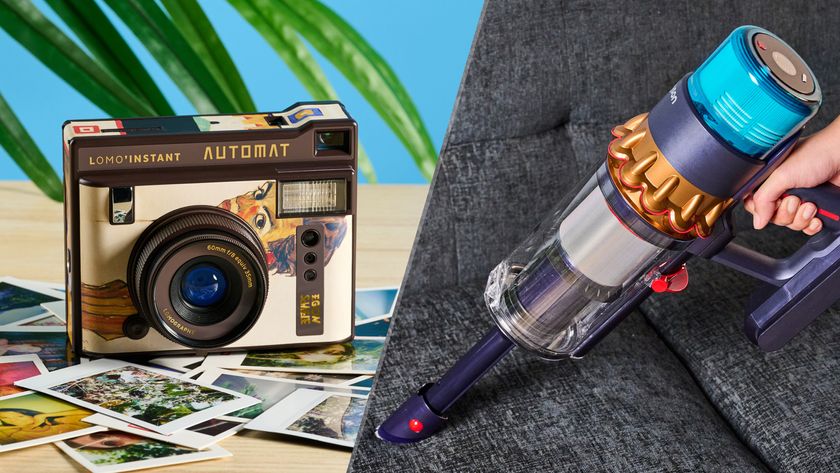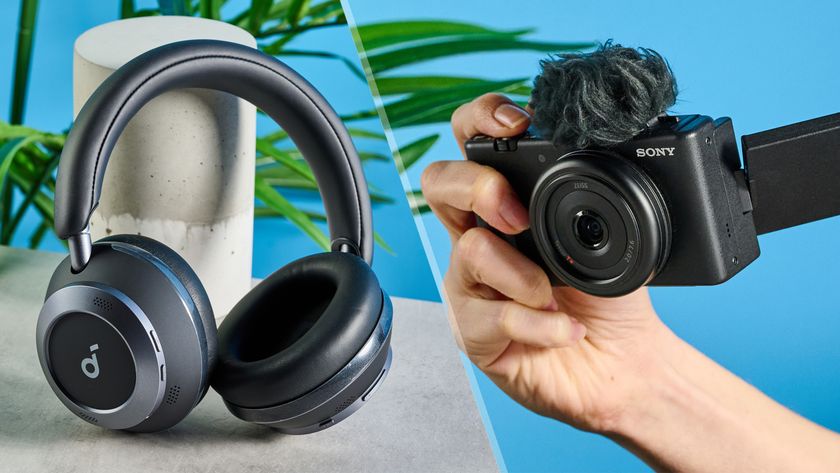The best handheld gaming consoles in 2025
The best handheld gaming consoles let you enjoy games on the go

Grabbing one of the best handheld gaming consoles will change the way you play your favorite games, whether you're on the move or simply away from your console or PC. And thanks to a renaissance of sorts, they're only getting better.
Seriously, if you were lucky enough to have a Game Boy or PSP back in the day and adored every minute of playing on them, the latest generation of gaming handhelds offer that same kick. This time, with a whole lot more gaming performance to boot, as you'll be playing some of the best games around on them.
For starters, you can't go wrong with my favorite overall system: the Steam Deck OLED. This manages to do something special in giving you PC games in a console-esque experience with a gorgeous OLED display. Then there's the Nintendo Switch OLED, which is still one of the best portable machines you can get despite its 2017 internals. As a surprise pick, you'll be seriously impressed with the iPad mini 7 and its mighty A17 Pro performance.
Even more handheld consoles are popping up this year, with the hugely anticipated Nintendo Switch 2 making waves, the Lenovo Legion S coming with SteamOS to compete with Steam Deck and the huge Acer Nitro Blaze 11 making a big statement with its 11-inch display.
Until then, for the best handheld gaming consoles you can get your hands on right now, we've got you covered below.
The quick list
Here are the best handheld gaming consoles you can buy right now based on our testing and reviews.

The original Steam Deck was excellent but the OLED model is even better thanks to the OLED display, faster Wi-Fi, improved battery life and additional storage.
Read more below
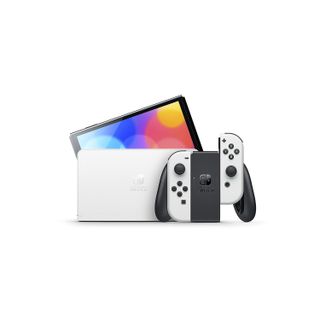
The Switch OLED is the best version of Nintendo's hybrid handheld console. Its beautiful display and quality-of-life upgrades make it a must-have.

With powerful specs, a lightweight design, and a great 1080p 120Hz display, the Asus ROG Ally is a solid alternative to the Steam Deck. Just be prepared to deal with Windows 11.

The Lenovo Legion Go is a great Windows 11 handheld thanks to its large 8.8-inch 144Hz display, detachable controllers and intuitive launcher. It's not as seamless as the Steam Deck but its virtues make it a winner for Windows gaming.

The Asus ROG Ally X has the same processor and display as the original but features more storage, a more ergonomic design and longer battery life. The latter could be enough to warrant an upgrade, as is the nominal boost in performance.

The iPad mini 7 seriously turbo boosts the gaming credentials of this 8-inch tablet with A17 Pro — capable of running detail-rich AAA titles with hardware-accelerated ray tracing and impressive frame rates. This tablet is also great when using streaming applications like PlayStation Remote Play.
Load more products...
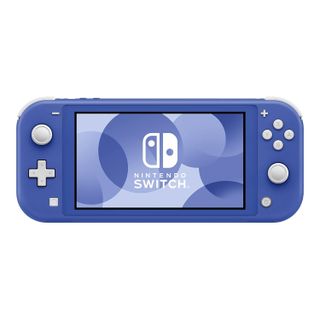
If you want access to the best Nintendo Switch games and don’t mind being limited to handheld mode, the Switch Lite is a no-brainer. But some of the magic of the standard $299 Switch gets sacrificed in favor of the Lite’s smaller size.

The Asus ROG Phone 9 Pro is truly the most powerful and longest-lasting smartphone around, making it a great option for those looking to pack plenty of gaming power into a phone. This is as premium as it gets when it comes to Android phones and is mobile gaming at its prime.

Jason brings a decade of tech and gaming journalism experience to his role as a Managing Editor of Computing at Tom's Guide. He has previously written for Laptop Mag, Tom's Hardware, Kotaku, Stuff and BBC Science Focus. In his spare time, you'll find Jason looking for good dogs to pet or thinking about eating pizza (if he isn't already).
The best handheld gaming consoles you can buy today
Why you can trust Tom's Guide
The best handheld console overall

Specifications
Reasons to buy
Reasons to avoid
The Steam Deck OLED is the real deal. Actually, it’s more than that: it’s the best handheld gaming PC ever made. And it’s not all that close. While it’s not a revolutionary upgrade over the original Steam Deck, new features like an OLED HDR-capable display, Wi-Fi 6, and improved cooling make a huge difference. Like its predecessor, this handheld is an engineering marvel.
If you already own a Steam Deck, I still recommend upgrading in the strongest terms… providing you can afford it, of course. Let me be clear about the Deck OLED’s HDR screen: it’s the definition of a “game-changer”. It’s a night-and-day improvement over the subpar LCD panel that often made the best Steam games look washed out on the OG system. Play classics like the Resident Evil 2 remake or Batman: Arkham Knight on the upgraded Deck’s mesmerizing screen and those games now look so much easier on the eyes thanks to the infinite black levels Valve’s revised handheld is now capable of delivering.
If you’ve got a bulging Steam library on either a gaming PC or laptop, Steam Deck OLED gives you a terrific new way to experience your library. SteamOS is a dream to navigate, with Valve creating a console-like interface that works with zero hassle, while the developer also does a marvelous job of telling you what games run well on its handheld PC thanks to its “Deck Verified” ratings.
If you’re into PC gaming, the Steam Deck OLED is a no-brainer purchase. The quality of that incredible HDR display, which can hit peak screen brightness of 600 nits, paired with the strength of SteamOS means no Windows handheld can currently match Valve’s marvelous machine.
Read our full Steam Deck OLED review.
The best handheld for console gamers

Specifications
Reasons to buy
Reasons to avoid
As the name would suggest, this Switch offers an OLED display that's not only larger than that of the standard Switch but also brighter and more colorful, really making some of the best Nintendo Switch games instantly pop.
The OLED model makes so many quality-of-life improvements that really should have been in place when The Big N’s handheld hybrid first launched in 2017. Chief among them? The OLED version finally has a sturdy kickstand that no longer looks like a stern glance could topple the little console over — I can’t fully describe how much I loathed the ludicrously flimsy stand on the launch version. The addition of slimmer bezels, more convincing speakers and an Ethernet port for the system dock are also welcome additions I’m glad Nintendo implemented.
The real headline upgrade is obviously that glorious 7-inch OLED screen, of course. As someone who has been obsessed with “organic light-emitting diodes” for a decade, it’s been beyond gratifying witnessing some of my favorite Switch titles get instantly transformed and be made way more visually appealing thanks to the perfect black levels OLED brings to the table. Games that primarily take place in dark environments, like the riveting Metroid Dread over the hugely underrated Switch port of Alien: Isolation, look incredible on the Switch OLED’s sensational display.
Thanks to the sheer number and quality of first-party games on the Nintendo eShop, combined with a best-in-class screen only Steam Deck OLED can compete with in the portable gaming space, there’s no doubt in my mind the Switch OLED is the best handheld the legendary Japanese company has ever made. And that’s really saying something when you consider an incredible lineage that stretches all the way back to 1989’s Game Boy.
But with the looming specter of Nintendo Switch 2, is now the right time to buy? Maybe. Only if you find a solid Black Friday deal would I say go for it. But that doesn't stop this from being the best handheld if you've been a lifelong console player.
Read our full Nintendo Switch OLED review.
The best Steam Deck alternative

Specifications
Reasons to buy
Reasons to avoid
The Asus ROG Ally might not be the Steam Deck killer we expected but it's currently the best Windows handheld on the market. This 7-inch handheld boasts a 120Hz display and a powerful new Zen 4-based AMD APU. Toss in official support from Xbox and the ability to play any Windows-compatible game out of the box, and the ROG Ally should theoretically decimate Valve’s portable gaming device. Yet that’s simply not the case when you have my beloved Steam Deck OLED out there.
Better specs on paper don’t always make for a better gaming experience, though I appreciate the ROG Ally’s 1080p display that delivers sharp visuals at a smooth refresh rate. Games can also run at 60 frames per second and above thanks to the new Ryzen Z1 Extreme processor. On top of that, the handheld’s ergonomic design makes it a pleasure to hold from my experience — not to mention how comfortable it proves to use for long stretches of time. There’s a lot I like about the ROG Ally.
Despite its virtues, the Asus ROG Ally can’t topple the Steam Deck OLED. Yes, it has a sharper display and a faster processor, but the gains from these are arguably negligible — especially when you have to run games at 720p to get nominally better performance. Worst of all is the lack of a dedicated user interface like SteamOS. The Asus Armoury Crate app does a decent enough job of gathering games in one spot, but it’s nowhere near as intuitive or functional as Valve’s operating system.
Read our full Asus ROG Ally review.
The best handheld console for Windows gaming

Specifications
Reasons to buy
Reasons to avoid
The Lenovo Legion Go is the latest gaming handheld looking to topple the mighty Steam Deck OLED. Spoiler: it clearly doesn’t. Yet that doesn’t mean I don't like and appreciate many aspects of Lenovo’s portable machine. With its large 8.8-inch 144Hz display, powerful AMD Ryzen 1 Extreme processor and detachable controllers, this Windows 11-powered gaming system has a lot going for it.
In my book, Lenovo makes some of the best gaming laptops and best gaming PCs out there, so I’m not surprised that the company’s gaming handheld looks and feels like a premium product. Despite its virtues, though, I feel the Legion Go's greatest strength is also its biggest weakness — namely, Windows 11. While the ubiquitous operating system allows for a great degree of customization via apps and programs, it also prevents Lenovo’s machine from being an easy-to-use gaming handheld. In my opinion, it’s not in the same league as SteamOS.
While the Lenovo Legion Go isn’t perfect, its extra features arguably make it better than the Asus ROG Ally. The fact it’s also compatible with multiple launchers — like the Xbox Game Pass — is something a lot of gamers will appreciate. And while the “FPS mode” of the right controller, which sees it act as a pseudo mouse when placed into its controller place, is a neat yet ultimately overly gimmicky feature, the detachable pads themselves are a success on the whole.
Considering the relative power of its CPU, though, that 2K resolution screen (2560 x 1600) feels like overkill. In my experience, playing games at considerably lower pixel counts than the Legion Go’s native resolution in order to achieve faster frame rates can prove to be an eyesore. Still, Lenovo has made a handheld that does its best to innovate, and it deserves a lot of credit for that.
Read our full Lenovo Legion Go review.
The best premium handheld console for Windows
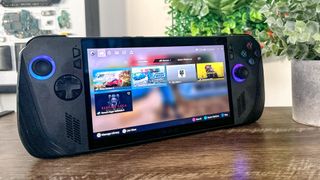
Specifications
Reasons to buy
Reasons to avoid
Must. Resist. Obvious. DMX pun. Oh the heck with it. “Ally X gon’ give it to ya.” Phew! Now that I’ve gotten that out of my system, if you’ve got the cash to spare, you should go for the premium Asus ROG Ally X over its less powerful predecessor.
There are a lot of improvements on show with this upgraded model compared to the ROG Ally. The X’s more ergonomic design, longer battery life and faster performance are all quality tweaks that I’m glad Asus put the work in on. The longer-staying power can be attributed to the bigger 80Wh battery, and I’m all about extra juice and less trips to my wall sockets when it comes to the best handheld. As for the performance games, those are largely down to the presence of a full-sized SSD and doubling the RAM of the original Ally. The improvements definitely make for a more enjoyable gaming experience.
Despite its advances, this machine still packs the same AMD Ryzen Z1 Extreme chip and 1080p ISP display of the original, which feel like big missed opportunities. If Asus ever launches an OLED ROG Ally X, I’ll happily tell the company to “shut up and take my money!”
Though performance is better, it's not a night and day difference. The display still delivers sharp images that move smoothly thanks to the 120Hz refresh rate. Again, the addition of an OLED option would really have been the cherry atop what’s mostly a delicious sundae.
If you're new to Windows handhelds and want a truly premium experience, the Asus ROG Ally X is the machine to get.
Read our full Asus ROG Ally X review.
The best handheld console for iOS gaming

Specifications
Reasons to buy
Reasons to avoid
Yes, a tablet being on the best gaming handhelds list could be seen as a bit of a stretch. But bear with me, as I explain why the iPad mini 7 absolutely deserves to be on this list — easily the best iOS gaming experience you can get.
You see, the App Store contains some true gems, including AAA titles like Resident Evil Village. And on top of that, Apple Arcade is low-key one of the better game subscriptions available today — giving you everything from gripping single-player experiences to entertaining multiplayer and casual games to pick up and play. Sayonara Wild Hearts was an early contender for the best Apple Arcade game, but What the Golf, Dear Reader and Lifelike are also ingenious experiences that you generally won’t find elsewhere that I highly recommend you check out if you’re an iPad owner.
With the A17 Pro inside here, you're sure to be playing these titles with impressive performance to boot. In playing Resident Evil 4, we saw the game run at a rock-solid 30 frames per second, which is crazy good for an 8-inch tablet. Just make sure you buy a Bluetooth controller, as on-screen touch controls have never been the best way to dig into AAA titles.
So if its dipping into the big blockbuster experiences like Assassin's Creed or dabbling in indie darlings such as Monument Valley, the iPad mini 7 does it all while also being a ruddy good tablet.
Read our full Apple iPad mini review.
The best value handheld

Specifications
Reasons to buy
Reasons to avoid
The Nintendo Switch Lite is about two-thirds the size of the regular Switch, and delivers two-thirds of what I love about the full-size model. Like its bigger cousin, the Switch Lite has access to Nintendo’s incredible library of first- and third-party games, as well as a comfortable control scheme and a big, colorful screen.
Whether you want to play your fill of Zelda, Mario and Animal Crossing, or Doom, Bayonetta and Assassin’s Creed, the Switch Lite can deliver the same excellent games in a profile that’s easy to stash in a backpack or purse. Thanks to its $200 price tag, it’s a great handheld option if you want to get your children into games. As much as I love my Switch OLED, I doubt the average kid cares about what type of screen technology they’re playing on during their formative years.
There are some drawbacks, though, which is to be expected for what Nintendo is charging for the entry-level of its handheld hybrid family. Due to its smaller size, the Switch Lite has a smaller battery, meaning less playtime overall — you’re going to be charging this cute little handheld a lot.
The Switch Lite also doesn’t have detachable Joy-Cons, meaning that impromptu multiplayer sessions are much harder to facilitate. If you’re a parent looking for the right model of Switch for your kid, and that particular omission bothers you, the original 2017 handheld is probably the better option for you and your family.
You also can’t transfer save data easily between a Switch Lite and a regular Switch, so consider carefully which one you want. If non-detachable Joy-Cons aren’t a big deal for you, and you want to save some bucks, the Switch Lite is still a quality handheld with a massive library of great games that will keep you occupied for months, if not years, to come.
Read our full Nintendo Switch Lite review.
The best gaming smartphone

Specifications
Reasons to buy
Reasons to avoid
The Asus ROG Phone 9 Pro is the best gaming phone that still manages to cover all the basics of a flagship smartphone. Its awesome performance, sharp looks and crazy battery life not only make it a fantastic phone for gaming but also a stellar portable gaming handheld.
The ROG Phone 9 Pro boasts a sleek and subtle design with capacitive triggers and even back panel lights to fill the back of the phone with snazzy effects. But don't worry, it won't draw too much attention that usually screams, "I'm a gaming phone!"
The excellent 6.78-inch FHD AMOLED (2400 x 1080) with a 185Hz refresh rate is bonkers, making any demanding Android game (or titles via cloud gaming services) look smooth and gorgeous. Oh, and do you like playing for hours on end? Good, because this phone lasts over 20 hours. That makes it the most powerful and longest-lasting phone Tom's Guide has ever used.
People who want an Android phone with exceptional battery life and will make use of the Armory Crate's bountiful contents as much as (or more) than their phone's cameras could find the ROG Phone 9 Pro bridges the gap between gaming and premium phone experiences in a way that no other handset can.
If you prefer to mix all your gaming with a smartphone during those long commutes to work, the Asus ROG Phone 9 Pro is at your service.
Read our full Asus ROG Phone 9 Pro review.
How to choose the best handheld gaming console for you
The best handheld gaming console for your needs depends on where you want to use it. If you need something that you can stash in your pocket and play absolutely anywhere, the ROG Phone 5 is the smallest, most versatile device on the list. If you want to split your game time equally between home and traveling, the Nintendo Switch is probably the best option, since you can hook it up to a TV.
Price is also a consideration. The iPad Air and ROG phone are much more expensive than the dedicated gaming handhelds on this list, but they’re also more versatile devices. It’s probably not a great idea to buy them exclusively for gaming, but if you happen to already own one, you may want to see what kind of games you can get before you complement it with a dedicated Nintendo device. Likewise, the Switch Lite is cheaper than the full-fledged Switch, but it also has fewer features.
How we test handheld gaming consoles
Since the best handheld gaming consoles comprise both dedicated gaming hardware and versatile mobile devices, we don’t have a standardized procedure to test them. Instead, we draw from our experiences with these devices after we give them full reviews. A Nintendo Switch and an Apple iPad Air, for example, fill very different roles in the tech world, so devising apples-to-apples tests for them is nearly impossible.
Instead, we evaluate each system’s game library, as well as how well it plays games relative to its hardware. An ROG Phone 5 is more powerful than a Switch Lite, but the Switch Lite can play much deeper, more involved games, thanks to its built-in controllers and Nintendo pedigree.
To earn a spot on this list, a system simply has to play excellent games, and be small enough to transport easily. For anything beyond that, we rely on our qualitative judgment.
Sign up to get the BEST of Tom's Guide direct to your inbox.
Get instant access to breaking news, the hottest reviews, great deals and helpful tips.

Jason brings a decade of tech and gaming journalism experience to his role as a Managing Editor of Computing at Tom's Guide. He has previously written for Laptop Mag, Tom's Hardware, Kotaku, Stuff and BBC Science Focus. In his spare time, you'll find Jason looking for good dogs to pet or thinking about eating pizza if he isn't already.
- Tony PolancoSenior Computing Writer
- Darragh MurphyComputing Editor




















